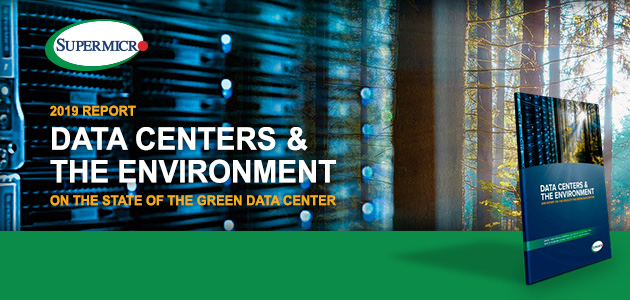WHERE TO BUY
ASBIS supplies a wide range of IT products to its customers all over UAE. To find out retail store near you visit ASBIS Resellers section
Other headlines

Supermicro has prepared the second Data Centers & the Environment report
It is based on the responses of 5000+ IT specialists and researches the level of progress data center leaders are making toward green initiatives.

According to the survey data, data center operators are making incremental improvements toward greener initiatives. However, there are still many missed opportunities around data center efficiencies. Respondents noted they are repurposing existing equipment as well as utilizing long refresh cycles. Unfortunately, older equipment is less efficient due to the inherent design technology of newer equipment. As a result, businesses adopting new technologies will be more competitive and potentially greener.
In the survey, data center leaders are asked a strategy question on how they measure the success of their data centers. A large percentage of the respondents report that overall data center performance, Total Cost of Ownership (TCO) and Return on Investment (ROI) are their primary measures of success.
Notably, these areas do not focus on reducing energy use and lowering environmental impact. The success factors more closely associated with green data centers such as Efficiency, Power Usage Efficiency (PUE), Information Technology (IT) Asset Lifecycles, and Corporate Social Responsibility (CSR) / Total Cost to the Environment (TCE) are mentioned as strategic success factors much less often.
An effective way to increase data center temperatures is to utilize servers that support free-air cooling. The Supermicro survey results indicate that many data centers are employing this design technique.
Data center server inlet temperatures are studied in this survey as a measure of green data center free-air cooling as a means of reducing PUE and increasing green power efficiency. Today, the average data center temperature is between 23°C–24°C depending on the facility.Consistent with this finding, more than half of survey respondents (51%) report data center temperatures between 21°C–24°C. However, nearly one-third of survey respondents (32%) report data center inlet temperatures above 25°C, with some (10%) ranging over 29°C. The trend with data center temperature is clear—it is increasing and will only get higher. Supermicro believes the trend toward higher green data center temperatures is likely to continue.
Data center rack power density is studied in this survey as a measure of green data center server consolidation and energy efficiency, with higher rack densities representing higher levels of server consolidation. Today, the average power consumption for a data center rack is approximately 7kW.2 A majority of survey respondents (57%) report a data center power density of <10kW per rack. Separately, 17% of respondents report power densities >30kW per rack, a value few data centers considered until recently.
As a solution company recommends to use multi-node servers to increase server density in data center.
Key conclusions:
- In 2019 partnerships with a certified electronics recycling companies has decreased by 40%.
- E-waste represents only a small 2% of U.S. solid waste, it accounts for a very high percentage (70%) of hazardous waste.Yet only 20% is formally recycled.
- One of ten companies still disposes the hardware without recycling.
- Redesigning the server to be modular enables data centers to upgrade the CPU/DRAM module while retaining the other components that are not ready for end-of-life. Replacing the CPU/DRAM modules can cut refresh capital costs by at least 44%.
- Number of respondents mentioned that they refresh their hardware every four years or longer has increased by 18% vs 2019.
Supermicro promotes its green attitude as a solution. By utilizing the disaggregated server architecture, data centers can refresh faster, improve performance, lower energy use, and also reduce capital and e-waste.










